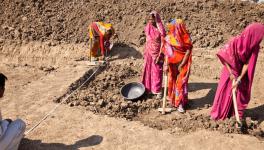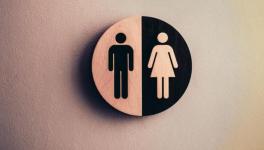Gender Gap in Newsrooms: 3 Out of 4 Bylines in English Dailies, 85% Slots in TV Panels Dominated by Men
Three out of every four news article published across leading English and Hindi dailies are authored by male journalists while on TV debates men dominate the screen with only one out of five panellists in English debates being women, states a new report by UN Women and Hyatt in collaboration with news portal Newslaundry.
The report “Gender Representation in Indian Newsrooms 2021”, based on data collected between August 2019 and July 2020, highlights that across print, digital and broadcast media, men still dominate the newsrooms.
The survey includes data collected from seven English newspapers and four Hindi newspapers for print media, while broadcast data was collected from seven each of English and Hindi news channels. It also included data from 14 digital media outlets along with 47 radio stations.
Earlier in 2019, a similar report by Newslaundry in partnership with UN Women had noted that barely 5% of newsroom leadership positions were held by women for the time period October 2018 to March 2019.
PRINT MEDIA
The latest report noted that out of 21,988 articles published across 11 newspapers in both English and Hindi, a whopping 74.5% were authored by male journalists, while women had bylines for only 25% of the articles.
Not only that, the report found that most front page news in Hindi newspapers were written by men, Prabhat Khabar faring the worst with 77 males and one female journalist having a byline in the first page. In terms of total contribution of women, The Times of India featured at the top with 31% of articles written by women, followed by Amar Ujala with a close 29% bylines for women.
In terms of categories of reports, 29% of all business stories in English newspapers were written by women, while in all four Hindi papers, women wrote just six out of 85 articles on business. However, 75% of the editorial pages in English dailies were predominated by men.
As far as sports stories are concerned, only 6% of the total reports were written by women in the newspapers during the period of survey.
For COVID-19 reporting, women journalists consisted about 36% of the authors of pandemic stories across the English and Hindi dailies surveyed.
News Channels
News channels fared similarly in terms of pre-dominance of male journalists. The report noted that a whopping 85% of the panellists in 1,265 English news debates surveyed were men, while for Hindi channels, the case was even worse with over 91% panellists being men. Not only that, more than half of the English debates (51%) lacked women panellists altogether.
As far as categories of debates are concerned, gender disparity was observed across various categories. While only 14% women panellists featured in debates on COVID-19 in the English news channels, in the Hindi news channels the number of women panellists was a meagre 8%.
In terms of discussions on global news, defence and legislative matters, only 10% panellists were women while topics like human interest or entertainment features around 32% women panellists. This bias is similar in Hindi news channels, with debates on entertainment and human interest stories featuring more women panellists.
Most notably, across the 14 channels surveyed in both English and Hindi, there were zero women on sports panels.
Digital and Radio
The digital news outlets fared better in terms of representation of women, with 41% of the articles surveyed written by women. The survey included 14 digital news media such as Newslaundry, News Minute, Quint, Print, Scroll, Swarajya, Firstpost, and The Wire.
Among these, Swarajya performed the worst with women writing only 14.7% stories.
In terms of COVID-19 coverage, around half of the articles were written by women with 60% reports in Print, News Minute and Quint authored by women journalists while Newslaundry Hindi and Swarajya had only 7%.
Further, the report also noted that digital newsrooms have subverted the usual male-dominated trend, particularly The News Minute, co-founded by Dhanya Rajendran and Chitra Subramaniam, which has 65% women staff.
The commercial and community radio stations surveyed also reported a fairly equitable gender representation, with women staffers being slightly higher than men. But even here, leadership positions were dominated by men with 75% of the managers being male.
Among the 11 commercial radio stations surveyed, radio jockeys were found to be nearly equal in terms of representation.
Furthermore, the survey also recorded responses of journalists – 51 from newsrooms and 30 freelancers on their experiences in the media sector, sexual harassment in workplace as well as impact of the pandemic. Out of 81 respondents, 57 were women and 14 were men.
Half of the respondents expressed that there had been no training about sexual harassment at their workplace over the last two years. In addition, 40% of the respondents said that they had faced predatory behaviour in newsrooms before, while none reported facing sexual harassment.
Within Newslaundry itself, half of the women employees also said that they were unaware of the existence of the Internal Complaints Committee, where such issues can be reported. While all employees in Newslaundry responded that all genders were represented, the most well-represented point was chosen by five male employees.
Get the latest reports & analysis with people's perspective on Protests, movements & deep analytical videos, discussions of the current affairs in your Telegram app. Subscribe to NewsClick's Telegram channel & get Real-Time updates on stories, as they get published on our website.























